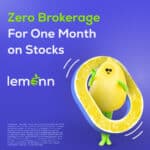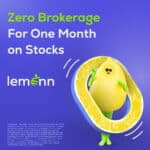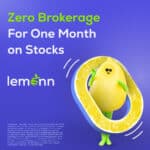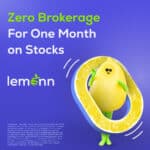
We have all heard about PE ratio. But what about PEG ratio? American investor and mutual fund manager Peter Lynch first proposed growth-at-a-reasonable-price approach to investing, relying on PEG ratio which gauges price-to-earnings ratios in relation to growth rates. Outside his successful career as a fund manager, Peter Lynch is renowned for his individual-centric investment strategy. In this article, we will attempt to decode Peter Lynch’s investment strategy and thinking that transformed retail investing forever.
Peter Lynch’s investment strategy and rules
Peter Lynch’s investment strategy revolves around individual retail investors as he believes they have more flexibility compared to large money managers. Simplistic as it may sound, Lynch underlines investing in only what you understand. There are four basic rules that he proposed while formulating his investment strategy.
Story investor
Peter Lynch inspires investors to frame stories about the financial performance of a company. He is a true story investor, building character-based stories according to the historical performance, growth, and potential of a company. His stories try to delve into the attributes that led to the company’s stellar performance. Based on these stories, he decides if a company is a slow or fast-growing one.
Go Long
Peter Lynch does not believe in swing trading or short-term trading. Instead, he advocates investing for the long run. He prefers to stay committed to his investment choices until the financial condition of the company deteriorates. Lynch urges investors to stay calm and believe in their own intellect to stay in the market rather than making untimely decisions based on minor market fluctuations. Moreover, he does not believe in timing the market.
Invest in stocks you know and understand
Peter Lynch’s investment mantra is “Invest in what you know.” Familiarity with a company, he holds, will help investors understand which direction it is headed. Also, it will help you understand its business and competitive landscape better, leading to a good investment decision.
Proper research
As you see, research is the most vital factor for stock market success. The legendary investor advocates proper market research before investing. As you are risking a significant amount of your income in the market, adequate research about the company, its goals, dividend-yielding, growth rate, financial obligations, etc is needed to make a profitable decision.
The Peter Lynch formula
One of the most demanding aspects of Peter Lynch’s investment strategy is his investing formula. His formula stresses exploring the potentially profitable stocks and selecting the ones that can outperform the market in the near future. The investment formula proposed by Peter Lynch can be broadly categorized under three heads.
- P/E Ratio: The price-to-earnings ratio or the P/E ratio is a financial metric suggested by Peter Lynch to assesss a stock. It compares the current price of a stock to the per-share earnings of a company. A higher P/E ratio therefore indicates better returns.
- Growth Rate: Another element of Peter Lynch’s investment formula is to comprehend the growth rate of a company. Investors can get a close look at it by observing the historical performance of the company and its future prospects. Often referred to as the PEG ratio, this is a simple formula that calculates the historical performance of a stock in relation to its current performance.
- Potential: The last vital factor of Peter Lynch’s formula is examining the potential of a stock before investing. One can do that by thoroughly researching significant developments that impact the company and the management’s strategy during economic downturns.
The rule of 20
The rule of 20 revolves around two metrics: the P/E ratio and the inflation rate to gauge if the market is fairly valued or not. It states that the market is fair when the sum of the P/E ratio and the inflation rate is 20. On the contrary, the market will be considered to be undervalued if the sum is below 20 and overvalued if the sum goes above 20.
According to the rule of 20, the acceptable P/E ratio of the market is thus 20 minus the present inflation rate. So, if the current inflation rate is 3% the P/E ratio of the market will be 17 (20-3=17). If the P/E ratio goes below the acceptable P/E ratio, then the market is considered to be undervalued. Whereas, if it is higher, then it indicates that the market is overvalued.
The rule of 20 is a generalized way of understanding the stock market for beginners. The broad guidelines can help them get an overview of the stock market. However, it is not a precise factor to calculate the exact market value of a stock. Over the last 50 years, the average P/E and inflation ratio was seen to be ranging in between 14 to 34. Though checking this ratio is helpful, other factors including interest rates, corporate earnings, and economic indicators significantly impact stock prices. Therefore, investors need to consider the rule of 20 as a starting metric for making their investment decision, but not as their only tool of analysis.
Selecting stocks according to Lynch
Peter Lynch underlines going steady in the stock market. For that, he suggests investing in one stock at a time and then taking enough time to become acquainted with the company and the industry as a whole. Instead of relying on the suggestions of a speculative platform to choose profitable stocks, Lynch suggests picking stocks using your own intellect after thoroughly researching the market dynamics. He further suggests investors spend time understanding their selected company’s future plans, headwinds, and cost pressures. The pointers below sum up Lynch’s tips for selecting stocks:
1. Try to invest or trade in a predictable industry. This means that sudden unpredictable trends will not shake off your position value or attract much market competition to lower the value.
2. Choose the stocks of a company that is growing at a fast rate.
3. The company that you choose has a proper niche and base of satisfied customers.
4. The company should be well-known, but not so popular that money managers talk about its performance, as this will increase your competition.
5. Look if the products it sells are in demand or not.
6. If the company is buying back its shares, it is a positive signal, indicating that the company is growing and is profitable.
7. If you are not familiar with the companies or the industry in general, over-diversifying your stocks may land you in trouble.
Which stocks to avoid
In his book “One Up on Wall Street,” Peter Lynch mentions that investors need to avoid hot stocks. The rationale is that stocks that are in the limelight will attract a huge number of investors as they get to know about these stocks from various platforms. Driven by peer pressure or sheer profit motive, lots of investors put their money in such hot stocks. It is true that stock prices of such hot stocks can get sky-high due to the hype surrounding them. But after the initial surge, they may lose their value when investors start selling them on realizing that these stocks do not have further room to grow.
Summary
Like the value investing principle proposed by Benjamin Graham and popularized by his illustrious disciple Warren Buffett, Peter Lynch’s investment strategy is the stuff that legends are made of. Individual investors are at the heart of his investment mantra, reflected in his no-nonsense, common sense approach to investing that appeals to retail investors.




